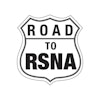Monday, December 2 | 8:20 a.m.-8:30 a.m. | M1-SSBR04-3 | Room S406A
Out of all of the supplemental breast imaging modalities, MRI detects the most cancers, according to this scientific presentation.
In his talk, Matthew Covington, MD, from the University of Utah in Salt Lake City will highlight his team’s results on how supplementing 2D mammography with other imaging modalities boosts cancer detection. And of these modalities, MRI has the edge.
While mammography continues to be the gold standard in breast cancer screening, it doesn't identify all breast cancers. This especially goes for dense breasts.
Radiologists for years have explored how supplemental techniques such as ultrasound, molecular breast imaging, contrast-enhanced mammography (CEM), and MRI can increase cancer detection. The researchers put these to the test, finding out which supplemental imaging breast modality adds the most cancers found in 2D mammography.
The team used data from the Mammography Quality Standards Act, which included 40,538,610 screening mammograms performed in 2023. Using the Breast Cancer Surveillance Consortium, the team found a 43% prevalence of dense breast tissue and a 2D mammography cancer detection rate of 4.7 cancers per 1,000 exams.
Also, the incidental cancer detection rates of supplemental screening per 1,000 exams are estimated at the following: 1.7 for digital breast tomosynthesis, 2.7 for ultrasound, 8.1 for molecular breast imaging, 10.7 for CEM, and 16 for MRI.
Additionally, the maximum number of supplemental screening exams in the study was 17,431,602, with the total detectable cancers in the 2023 screening population being 469,437. Of these, 2D mammography alone would detect about 41% of these cancers.
Learn about other insights from this study by attending this session.

